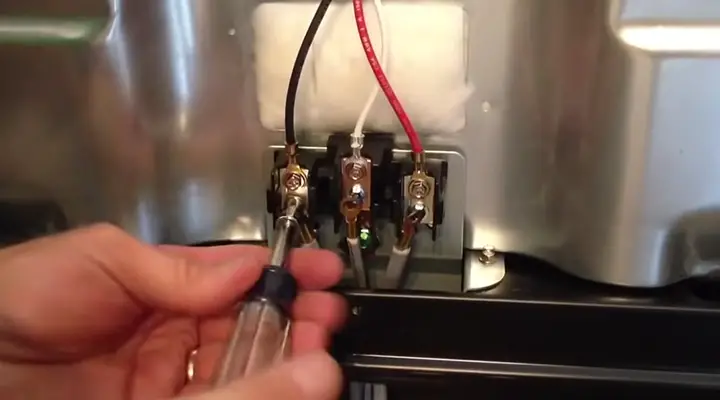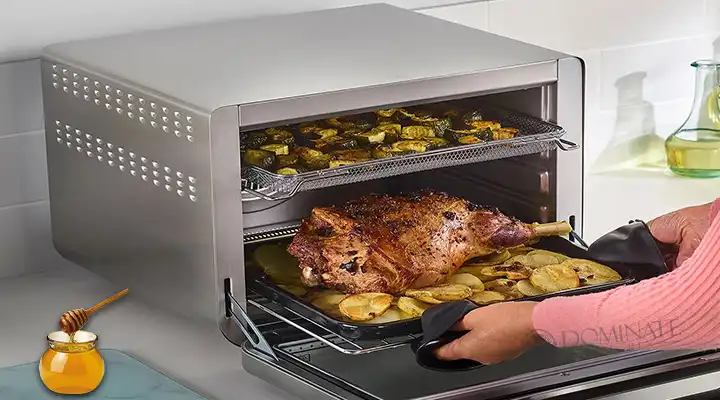New Oven Has 4 Wires House Has 3 | What to Do Now? Solution
The construction of the kitchen oven or the dryers utilizing a 3-wire cord and socket is regarded as Protocol in an earlier construction, like an old house constructed in the 1950s.
The construction of cooking ovens and washing dryers, however, calls for a 4-wire line and outlet in the new building. A wire for machine grounding is located on the fourth wire of that cable and plug combination. In the earlier 3-wire arrangements, this instrument grounding wire seems to be the absent wire.

Connecting the 4-wire Oven in the 3-wire House
So the best thing to do is not put your 4-wire cord in the 3-wire connections. What you should do instead is you should change the outlet to a new and safer 4-wire connection that is mandatory for new housing in the USA and many places.
For doing that you need to first open up the connection socket and see if you have a grounding wire in the connector. If you have one, you are in luck! Otherwise, you have to wire one to the connector.
The manufacturers had sorted the white wire with the green wire to ground the appliance. The new building code wants you to separate these two for safety reasons.
To change the connector, we need a 4-wire connector or socket first. This is available to any local electric equipment shop or online. Remove your old wires from the connector using a Philip screwdriver and to do so, first make sure that you have turned the electric connection off from the main board.
You will see that in the 4-wire connector socket there is a marked point were the grounding green wire shall go. The white cable shall go to the exact opposite point. It’s okay to put the red and black wire in the other two points however you want as anyway will do the job fine.
As we have put the 4-wire connector in place of the old one, now is the time to connect the cables to the oven if they are not pre-attached. In that case, you need to find out where the wires will go in the oven range. The board of the oven will have three points to attach the red, white, and black cables.
The white will go in the middle and the other two as you please. The green one will go just under these wires where there is a designated point to attach the green cable to the appliance’s body.
The Need for 4-wire Cabling
The neutral function that the device grounding conduct in the 4-wire cable and plug arrangement now performs the device grounding cable formerly performed within an old 3-wire arrangement. The conductor that is now fastened to the metal structure and casing of the equipment is the appliance-grounded conductor.
In the event of a short to ground, it is solely responsible for carrying out any switching losses on that material. Since the NEC forbids it during residential development, the neutrality in that cable is no longer attached to the metal structure and casing and can’t be.
This was long ago established that connecting the outer metal of equipment to a neutral line that is carrying current is not a good idea, that is why the neutral cable of a device is no longer allowed to transmit current back to the origin (that means it cannot be connected to the metal structure and housing of equipment).
When the appropriate conditions arise, like a resident stepping barefoot on a damp basement, that flowing electricity on the bare metal of such a machine may momentarily determine that a living being in connection with that bare metal is that path’s least resistant.
Frequently Asked Questions
How Is A 4-Wire Connected To A 3-Wire?
Plug the 3-wire’s ground line into the 4-cable’s ground connection. Attach either the red or just the black cable of the 4-wire connection to the black line of the 3-wire connection. The “hot” cables are the red and black ones. A circuit can be powered by either line.
Can A 4-Wire Cable Be Used With A 3-Wire Stove?
An electrical cord containing three or four prongs will operate all electric ovens. The cabling for every sort of connection is somewhat varied, but connecting a cord is simple. If you understand how to convert, going from four wires to three wires or conversely is as simple.
How Is A 3-Wire 220 Connected To A 4-Wire Connector?
You don’t. Unlike a 3-wire connection, which includes the neutral & ground on a single connector, a 4-wire plug contains an additional prong for one dedicated ground. It is conceivable for electricity too short across the neutral cable and reverses feed via the earth wire to the device when the neutral, as well as ground, have the same prong.
Due to this, the metal components of the appliances become “hot,” making anyone who comes into touch with them susceptible to being hurt or even killed. is not advised and does so in some locations in violation of the power safety regulations.
Is A Ground Wire Required For An Oven?
A ground line is necessary for any metal electrical device to be safe.
Conclusion
Hope you have learned all you needed to know in case you have bought a 4-wire oven and found out that your home has a 3-wire line. The best advice we always give to you guys is to be 100% safe and learned when you are dealing with electricity. Maybe call the electricity guy if you are confused about which line goes where! After all, he is the expert, isn’t he?






